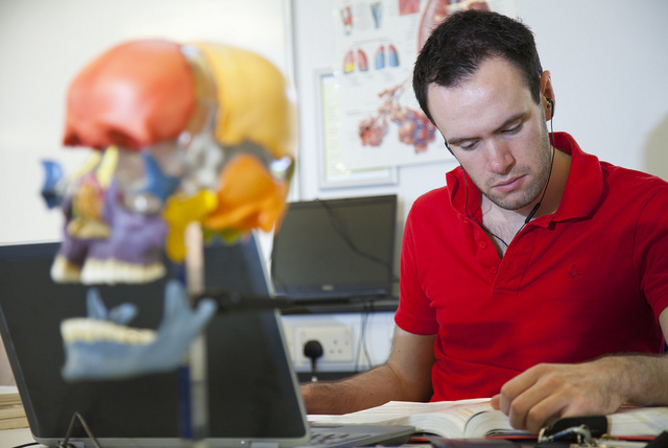
If you need doctors to work in the country, you need a selection system that picks people with those values and commitments. University of Exeter/Flickr, CC BY
Prime minister Tony Abbott has justified his decision to help fund a new medical school in Perth by noting that Western Australia lacks locally-trained doctors.
But how can we know whether the new institution will help Western Australia’s shortfall of 1,000 doctors, many of whom will be needed in rural and remote areas?
Three features of a medical school help predict where medical students will eventually work as doctors. They are selection, the curriculum, and the professionalism of the newly-qualified doctors.
Selection procedures
The aim of selection procedures is to predict and select applicants who will go on and become good doctors, and reject those who are likely to perform poorly in medical school and future practice. This might be due to poor professional behaviour as well as a lack of clinical knowledge and skills.
If you get into medical school, there’s a 95% chance you should become a doctor. But there’s only a 10% chance of getting into many medical schools. So these schools can pick and choose from the cleverest, and still choose those who have the values and commitment to work where they’re needed.
Worldwide, doctors tend to like working in the city rather than in country. This means there are plenty of doctors in urban areas but too few working rurally everywhere; it’s not just an Australian problem.
The best predictor of whether a doctor will work in the countryside is whether she grew up in a rural town. And also, whether she has a good rural experience during her medical training.
So if you need doctors to work in the countryside, you need a selection system that picks people with those values and commitments.
The right curriculum
The second informative feature of a medical school is the curriculum. This sets out the knowledge, skills, and behaviours that newly-qualified doctors ought to have. And the methods used to teach them. A third curriculum feature is assessment methods, which help ensure students have achieved a high standard.
Modern curriculum design can produce doctors who are ready for work in hospitals and in general practice. They should also have sound knowledge and skills, and be good communicators.
Curricula come in different flavours, depending on the kind of doctor the medical school wants to produce. Using a medical education tool called SPICES, you can tell whether a medical school is based around the teacher, with all its training done in the hospital, and where all the students do the same thing. Or whether the curriculum is based around the needs of the student, teaching is done in the community, and there’s a degree of student choice around their interests.
An army of volunteer teachers in hospitals and general practices provides the backbone of clinical education, particularly for teaching how to manage chronic disease. But just because you are a doctor doesn’t mean you are a good teacher. So training this army to be effective clinical teachers is in itself a big job.
Assessment always makes students anxious, but medical school examinations are about protecting the public. A good medical school will have a clear system for following student progress, and managing and supporting students who are at risk of failing. This might be because of ill health, poor behaviour, a life crisis, or simply falling behind in their studies.
Training professionals
Around 85% of Australians visit a general practitioner at least once a year, and 7% will see a specialist. If you ask the public what they think are the characteristics of a good doctor, they will mention being caring, a good communicator, understanding their culture, being a good problem-solver, and working well with other professionals in a health-care team.
Some of these professionalism skills, for example, around empathy, are known to deteriorate during a traditional medical education. This is largely caused by the distress of the “hidden curriculum”, which is the hierarchical and competitive atmosphere in medical schools.
It can lead to haphazard instruction and teaching by humiliation, especially during the clinical training years. Senior students and newly qualified doctors can experience burnout on the front line of the public hospital system, which is underfunded and short-staffed when dealing every day with the increasing burden of chronic disease and emergency care.
But the good news is that some professionalism skills are thought to increase during the same phase in training. This happens when students are placed in rural communities for up to a year, for instance.
Their supervisors and hosting community freely contribute towards student education because they believe such students will return to work there. Medical school rural programs find that graduates of rural programs are not only likely to enter rural general practice but 70% remain in rural practice for decades.
There’s been much said in recent days about how this country doesn’t need another medical school. But what Australia actually doesn’t need is another traditional medical school feeding into a stressed public hospital system, and urban private practice. What this country could benefit from is an innovative medical school feeding into a reformed public health-care system.
But what comes first? This is where we need to challenge our politicians. We need innovative medical education and training, as much as we need health-care reform, with a focus on primary care.
If this new school doesn’t innovate, based on the evidence, it will do little to get doctors into areas of need.
